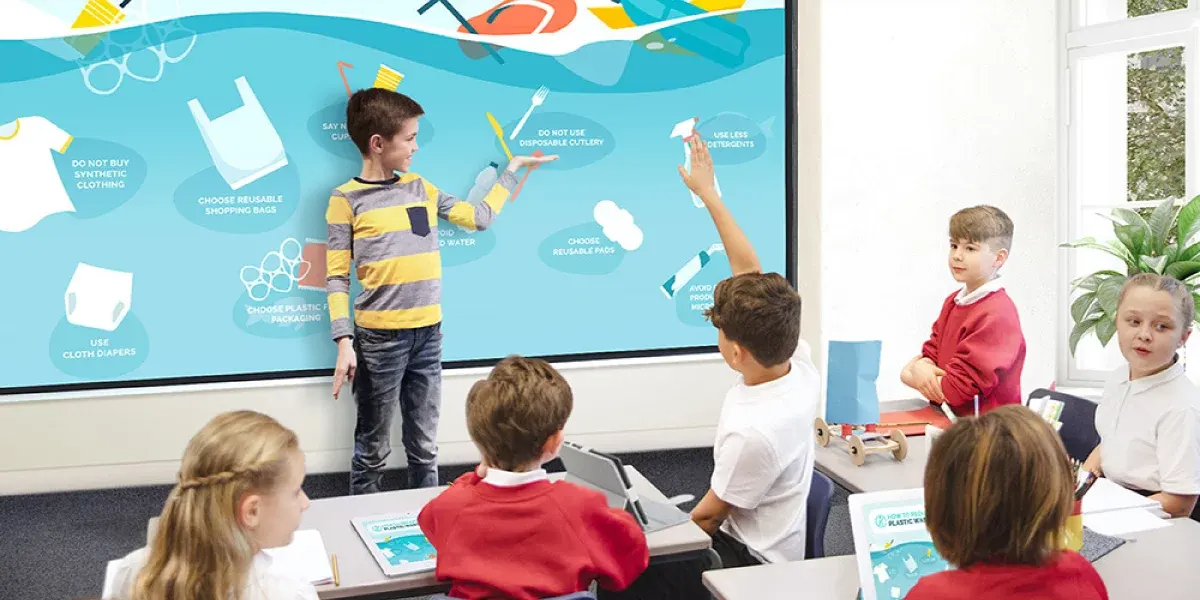
I. Introduction
The use of technology has become an integral part of our daily lives, including education. One of the most popular forms of technology used in education is touchscreens. Touchscreens have revolutionized the way we interact with devices and have made learning more accessible and engaging for children. In this article, we will explore the benefits of using touchscreen learning tools for kids’ education.
II. Benefits of touchscreen learning tools for kids education
Touchscreen learning tools have become increasingly popular among parents and educators due to their numerous benefits for children’s education. These tools offer a range of advantages over traditional teaching methods, making them an excellent choice for enhancing children’s learning experiences. Here are some of the key benefits of using touchscreen learning tools:
1. Improved Engagement: One of the most significant benefits of touchscreen learning tools is their ability to engage children in a way that traditional teaching methods cannot. With interactive games, videos, and animations, these tools capture children’s attention and keep them interested in learning. This increased engagement can lead to better academic performance and a greater desire to learn.
2. Increased Accessibility: Another benefit of touchscreen learning tools is their ability to provide children with access to educational resources that may not be available through traditional teaching methods. For example, many tools offer online libraries of books, articles, and educational videos that can be accessed from anywhere at any time. This increased accessibility can help children who struggle with traditional classroom settings or who live in areas where educational resources are limited.
3. Enhanced Interactive Learning Experience: Touchscreen learning tools offer a unique opportunity for children to engage in interactive learning experiences that they may not be able to get from traditional teaching methods. For example, many tools allow children to create their own digital projects, such as digital stories or videos, which can help them develop critical thinking skills and creativity.
4. Personalized Learning: Touchscreen learning tools can help children receive personalized learning experiences based on their individual needs and abilities. Many tools offer adaptive learning algorithms that adjust to each child’s progress, providing them with targeted support and feedback.
5. Flexibility in Learning Environment: Finally, touchscreen learning tools offer flexibility in the learning environment. Children can learn from anywhere at any time, whether they’re at home, in the car, or even on vacation. This flexibility can help children stay engaged in their learning and maintain a consistent pace throughout the year.
In conclusion, touchscreen learning tools offer numerous benefits for children’s education, including improved engagement, increased accessibility, enhanced interactive learning experiences, personalized learning, and flexibility in the learning environment. While there are challenges and limitations associated with using these tools, the overall benefits outweigh the costs. As technology continues to evolve, we can expect to see even more innovative touchscreen learning tools emerge in the future.
III. Types of touchscreen learning tools
There are several types of touchscreen learning tools available, including mobile apps, tablet computers, and interactive whiteboards. Each type has its own unique features and benefits, making it suitable for different age groups and learning styles. Here are some examples of these tools:
1. Mobile apps – These are designed for use on smartphones or tablets and offer a range of educational games and activities. They can be downloaded onto multiple devices and are ideal for children who are always on the go. Some popular mobile apps include Duolingo, ABC Mouse, and Math Blaster.
2. Tablet computers – These devices are larger and more powerful than mobile apps and offer a wider range of features. They are perfect for older children and teenagers who need more advanced learning tools. Some popular tablet computers include the iPad and Android tablets.
3. Interactive smartboard – These are large touchscreens that are mounted on walls or projected onto screens. They allow teachers and students to interact with each other and share information in real-time. They are ideal for group learning activities and can be used in classrooms or conference rooms. Some popular interactive whiteboard software includes SMART Notebook and Google Jamboard.
IV. Examples of effective touchscreen learning tools
There are many effective touchscreen learning tools available for children’s education. Some popular options include mobile apps, tablet computers, and interactive whiteboards. Here are some examples of these tools:
1. ABC Mouse – This app offers a comprehensive learning platform for preschoolers through second grade. It includes thousands of educational activities and games covering subjects such as math, reading, and science.
2. Duolingo – This language learning app uses gamification to make learning fun and engaging. It offers courses in over 20 languages and provides personalized feedback based on the user’s progress.
3. Kahoot! – This quiz-based learning tool allows teachers and students to create and play interactive quizzes on any topic. It can be used in class or at home and encourages participation and collaboration among learners.

Overall, touchscreen learning tools offer numerous benefits for children’s education, including improved engagement, increased accessibility, enhanced interactive learning experiences, personalized learning, flexibility in learning environments, and cost effectiveness. As technology continues to evolve, we can expect to see even more innovative and effective touchscreen learning tools emerge in the future.
V. Challenges and limitations of using touchscreen learning tools
While touchscreen learning tools offer numerous benefits for children’s education, there are also some challenges and limitations that need to be considered. One of the main challenges is the limited physical interaction that these tools provide. While they can enhance interactive learning experiences, they may not fully replicate the hands-on activities and experiments that are important for physical development and understanding complex concepts. Additionally, distractions from external stimuli such as noise or movement can make it difficult for students to focus on their studies. Finally, there is a risk of screen time addiction, which can lead to decreased attention span and reduced cognitive function over time. It is important for parents and educators to monitor and limit screen time, and incorporate physical activity and breaks into the learning process to mitigate these potential drawbacks.
VI. Conclusion
In conclusion, touchscreen learning tools offer numerous benefits for children’s education, including improved engagement, increased accessibility, enhanced interactive learning experiences, personalized learning, flexibility in learning environments, and cost effectiveness. There are various types of touchscreen learning tools available, such as mobile apps, tablet computers, and interactive whiteboards. Some examples of effective touchscreen learning tools include ABC Mouse, Duolingo, and Kahoot!. However, there are challenges and limitations associated with using these tools, such as limited physical interaction, distractions from external stimuli, and potential for screen time addiction. Overall, touchscreen learning tools can enhance children’s educational experiences and promote their development in a fun and engaging way.



